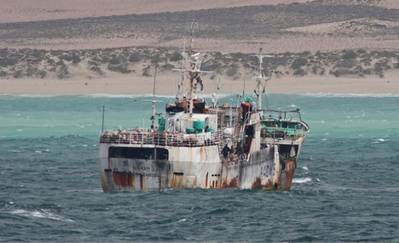The Baltic and International Maritime Council (BIMCO) informs it has continued its support for the Oceans Beyond Piracy (OBP) “The State of Maritime Piracy” report, which addresses how piracy is affecting the shipping industry – and beyond.
BIMCO’s Chief Shipping Analyst, Peter Sand and Chief Maritime Security Officer, Giles Noakes provided OBP expert audit and shipping industry expertise to the report content. In addition Giles Noakes, will provide his expertise in global industry security practices during the panel of the launch event on June 10, 2015.
The OBP reports provide an objective assessment of maritime piracy and its cost – from both a human and economic perspective – helping to inform global counter piracy policy and practice.
Released June 10, 2015, the State of Maritime Piracy 2014 report analyzes the impacts of piracy during 2014 in the western Indian Ocean region, the Gulf of Guinea, and for the first time, in South-East Asia – using clear and insightful infographics.
Addressing BIMCO’s involvement in compiling the report, Angus Frew, BIMCO’s secretary general, said, “BIMCO was again invited to carry out a review of the methodologies and the calculations of this year’s State of Maritime Piracy report. We have found that the report continues to live up to its usual high standards and will retain its respect and credibility among all stakeholders in government and the shipping industry alike. The report constitutes an informed and constructive contribution to the counter-piracy debate.
“It is clear to see that 2014 was a year of improvement in the Western Indian Ocean. Whilst attacks and hijackings have seemingly been deterred and defeated, there is, however, still clear evidence that the conditions ashore that create piracy have not changed substantially. The three legs of the deterrence milking stool, BMP, naval presence and armed guards, have clearly reduced the threat in the High Risk Area to one of lower risk. The continued use of private armed guards onboard ships, though, should not be seen as an endorsement or institutionalization of the practice by the shipping industry, or as a waiver of the fundamental obligations of flag states under UNCLOS.
“As pirate attacks continue to decline it is of paramount importance that the international community does not assume the fight is over, but continues to shift focus and resources to sustainable solutions that target the drivers of piracy at their root source. The myriad of capacity-building and regional coordination efforts are insufficiently developed to suggest that piracy has been eradicated to the extent that freedom of navigation can be assured without the need for additional self-protection measures, the payment of additional insurance premiums, and a naval presence.
“Many of the lessons learned from Somali piracy continue to be taken forward, as and where they can, in dealing with piracy problems in the Gulf of Guinea region, where seafarers are regularly confronted with violent kidnapping and ransom. Here there seems to be a will to resolve the problems; the implementation of the essential solutions ashore, however, continues to take far too long whilst the industry continues to pay an unfair and unreasonable cost towards the protection it needs in order to trade. Without the continuing level of interest and commitment by both regional and international actors in the pursuit of solutions, such as the Yaoundé agreement, then the problem will remain unresolved.
“This year for the first time, the report also includes a section on the human cost of piracy in Southeast Asia. The IMB has suggested that, “There’s a risk that the attacks and violence could increase if left unabated.” In the region, 93 percent of all attacks result in successful boarding of the victim vessel, significantly increasing the risk of direct, often violent, interaction between pirates and seafarers. This is particularly true in incidents where pirates attack a vessel with the goal of stealing its cargo and therefore need to stay on the vessel for a prolonged period of time. Worryingly, incidents, boardings, and piracy successes are highest there of any of the three regions Oceans Beyond Piracy has assessed in this year’s report.
“The findings of the report once more highlight the importance of the continued focus of government and shipping industry stakeholders on combating piracy. It illustrates a reduction in the overall costs, but at the same time draws attention to the costs of capacity-building and their implementation. It is vital to change the conditions ashore that create piracy in areas where it occurs, and the report highlights how expensive this exercise is.”
















